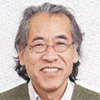Molecular analyses on the common physiological aspects of astronauts and bed-ridden old patients. – Publicly Invited Research 2018-2019
- A01 Ogura
- A01 H. Takahashi
- A01 S. Takahashi
- A01 Michiue
- A01 Hinoi
- A01 Tsumoto
- A01 Nikawa
- A01 Chatani
- A01 Kawakami
- A01 Akiyama
- A01 Tomita
| Research Subject | Molecular analyses on the common physiological aspects of astronauts and bed-ridden old patients. |
|---|---|
| Research Group Leader |

|
As described in a book “The G-connection: Harness Gravity and Reverse Aging” (written by former NASA director of Life Sciences, Dr. Joan Vernikas), astronauts in microgravity and old patients ridden on bed for long time show the same atrophic changes in muscles, bones, etc. This highlights several important, but unsolved issues, namely, 1) mechanical stimuli evoked by gravity play critical roles for homeostasis of our organs and tissues, 2) molecular mechanisms of how living cells sense and respond to physical stimuli (mechano-transduction) must be solved from a viewpoint of aging control, although these issues have not been solved yet.
We have established a system, by which C2C12 cells can be induced to differentiate into skeletal muscle cells by mechanical stretch. In this system, differentiated C2C12 cells show a mesh-like pattern of functional muscle tubes. More importantly, this mechanical induction of skeletal muscles proceeds with concomitant change of gene expression profile, even in the absence of chemical inducers, such as horse serum, etc. By exploring this unique mechanical differentiation processes, we will solve key signaling pathways directly linked to development of therapies and drugs to fight against physical frailty of astronauts and elderly people.

